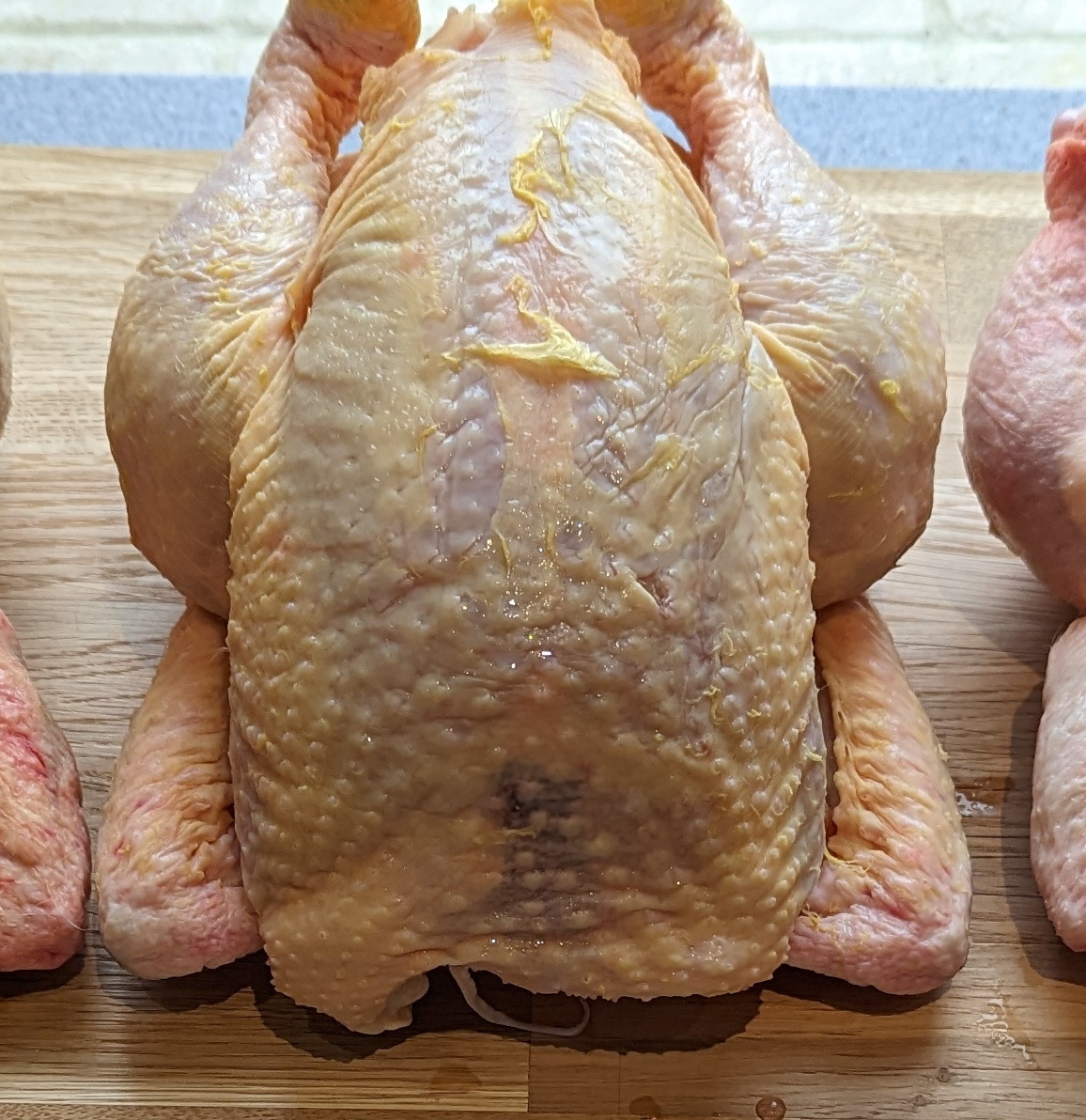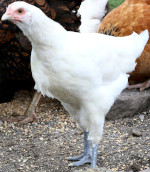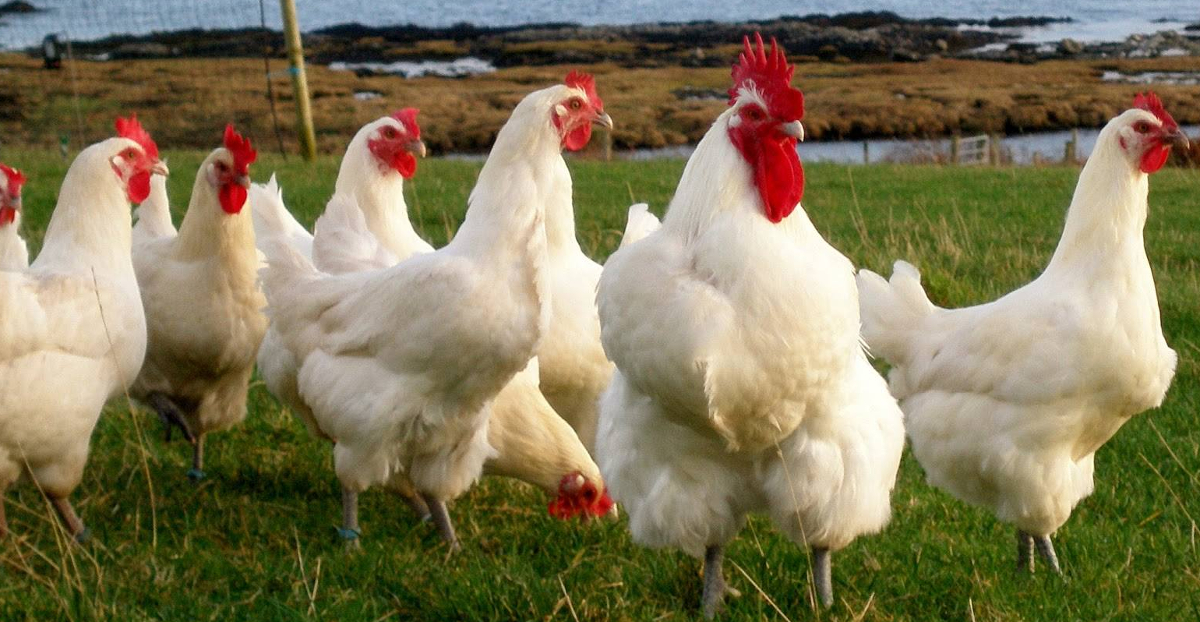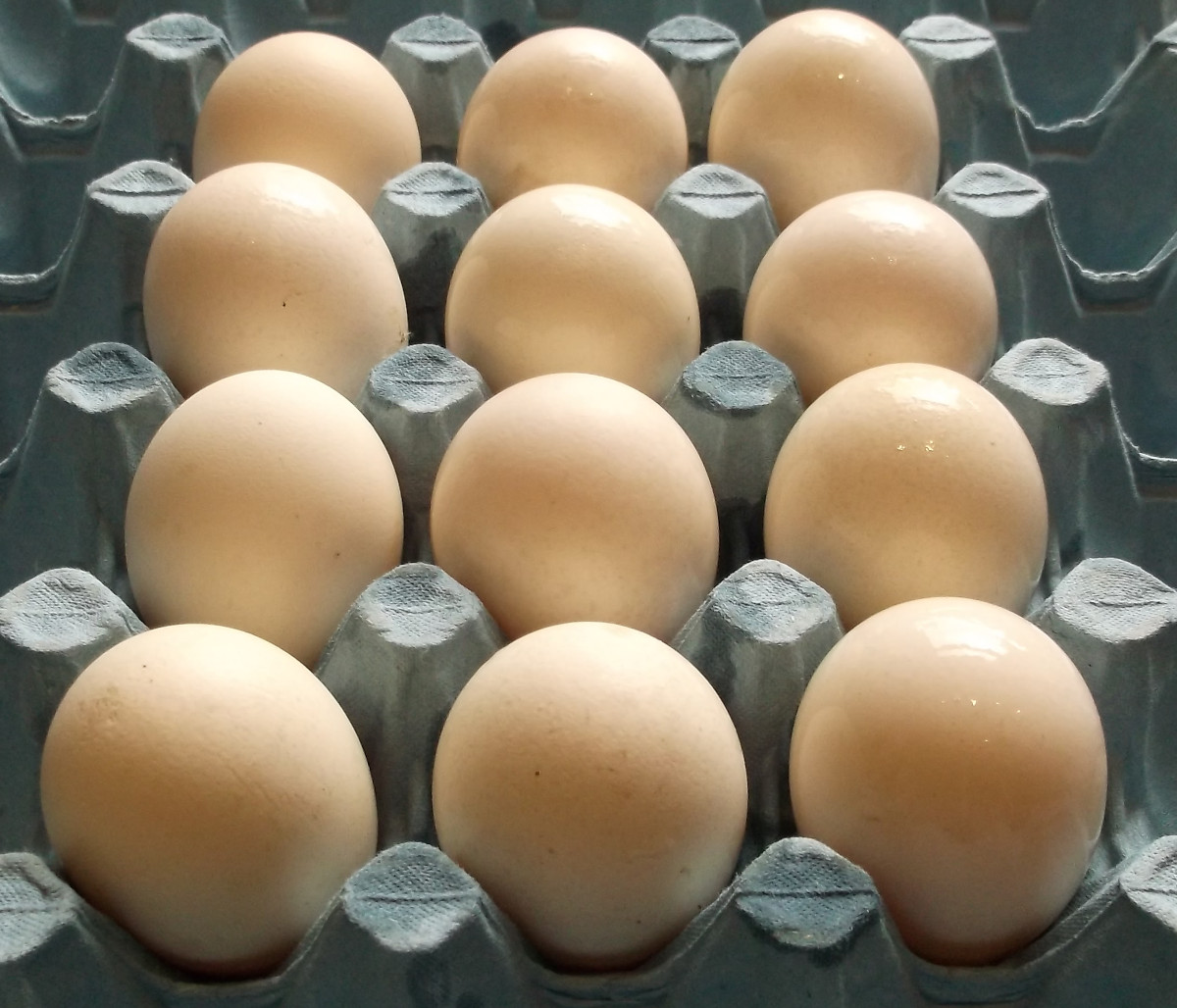When are Bresse chickens mature and ready for processing?

The time it takes for a Bresse chicken to be ready to eat depends on the age and weight at which it is processed and while the Bresse is a relatively quick growing chicken it takes time to be ready for processing.
Bresse chickens are processed at around 4-5 months of age when they reach a weight of 1.3 - 1.8 kilograms (3-4 pounds). You may choose to wait up to 6 months for a larger bird. Ultimately, the specific timing is up to the keeper and their desired end product.
A bird left to grow older will attain more weight but will have a firmer texture to the flesh and may need to be cooked in a different way.
When are Bresse chickens ready for processing?
This is how I process my Bresse chickens:
| Type of Bresse chicken: | Rearing conditions: | Slaughter Weight: | Slaughter Age: |
| Pullets. | 30 days on pasture and 30 days fattening on short light. | 1.2 kg | Four months. |
| Hens. | 60 days on pasture and 30 days fattening on short light. | 1.8 kg | Five months. |
| Young cockerels. (Spring chickens) | 75 days on pasture and 45 days fattening. | 1.5 kg | Six months. |
| Older cockerels. | At last 105 days on pasture and 45 days fattening. | 2.1 kg | Seven months + |
| Capons. | 150 days on pasture and at least 30 days fattening. | 3 kg + | 8 months + |
Hens are always fattened under short light condition to make sure they do not start or stop laying if they have started.
Bresse chickens are kept free-range, unlike their battery-raised cousins.
Their excellent texture, fine flesh and inimitable taste come from the breed, the region, the soil and natural feeds including cereals and dairy products, which more than explains why they cost more than ordinary broilers to rear.
How to finish and fatten a Bresse chicken:
All Bresse chickens , no matter what age they are processed at should spend at least one month on fresh green pasture and be given at least 10 square metres of ground each to free range.
Bresse chickens are typically butchered from four months old, only after they have been allowed to develop extra fat while being confined in a small area and fed corn and milk.
When they get within 30 days of slaughter they are moved to darkened fattening sheds to stop the hens laying and begin the fattening process.
Milk products, sweet corn and other cereals are the bulk of the diet in Bresse that are being readied for processing.
Processing Bresse chickens:
Bresse chickens are much older when processed, they grow up for at least four months, free range in the fields full of wild plants, they are fed local grains and produce and drink local fresh water.
Bresse are never transported distances for slaughter, this often happens on the farm where they are raised. This local production method reduces the stress on the chickens and makes for a better product.
Older birds are more difficult to process and pluck and Bresse are fully feathered unlike their modern broiler cousins.
After the bird has been killed and plucked, gut the Bresse but retain the liver and abdominal fat.
Chill, butcher and package by your chosen methods.


